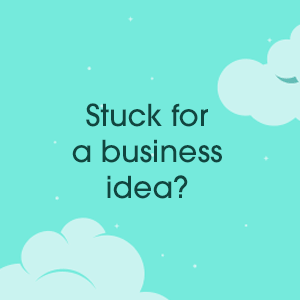The ONLY two ways you can make more money when you work for yourself
Wish you made a bigger profit as a business owner or freelancer? Discover the ONLY two ways you can make more money when you work for yourself.
When I work with freelancers and business owners, it is inevitably to solve a single problem: they need to make more money.
When you are earning enough money, many of the niggles that business owners and freelancers face can be easily solved. Don’t like some tasks? You can afford to outsource them. Don’t want to work full time? You can afford to hire help or reduce your hours. Want to expand? You can afford to invest and take a risk.
So how CAN you make more money when you work for yourself? Over the years, after working with and training thousands of entrepreneurs, I have realised that there are only two ways you can grow your profit:
- Earn more
- Sell more
Let’s look at each in turn, and find out how you can make more money with it.
1) How can you earn more when you work for yourself?
To earn more in business, you either need to charge more for what you are selling, or reduce your expenses so you make more profit on what you sell.
Pricing is the simplest way to earn more from what you do, and the chances are right now you aren’t charging enough. An experienced business consultant I worked with once told me that 98% of her clients where undercharging. Over the past 10 years I have mentored dozens of business owners and run two pricing challenges, and I tend to agree.
The issue is that most small business owners and freelancers don’t price correctly from the outset. Our Big Business report learned that as many as 34% of business owners base their prices on guesswork. But when doing this, they often fail to account for how much time they spend on an order, product or service. And very few actually realise (until I point it out!) that what they are charging for their offering also needs to cover their general business expenses and admin time.
They also mistakenly believe that if they charge less, they’ll be more busy, and their customers or clients will like them more. But this is not true. We tend to judge the quality of something based on its price. And while we all like a bargain, if something is cheap, we worry it’s not good quality.
What people REALLY look for is good value. Think about it. Let’s say you are getting your drive resurfaced and you get three quotes that look like this:
- £3,000
- £10,000
- £11,000
Which company do you go with? It’s probably not the one who quoted you £3,000 – it’s so much lower than the other quotes you would worry they hadn’t quoted correctly, had less experience, would cut corners or use cheap materials. You’re more likely to weigh up the more expensive two companies; they are so similar in price that it seems that is the right ballpark.
If you charge less, you need to work MUCH harder on your marketing
There’s another reason why being too cheap is a mistake: if you are charging less, you need more customers or clients to make the same amount of money. The fact is that your conversion rate (the number of people who decide to work with, but from or hire you after enquiring or seeing your sales material) will usually remain consistent. So if you charge less, you need more people in your sales funnel to make a profit.
Here’s an illustration of this point. The average conversion rate for online courses is 2%. This means that for every 100 people who enter your sales funnel, two people will buy.
So if you want to earn £1,000, here’s how many people you need in your sales funnel for different prices assuming a conversion rate of 2%:
- If you charge £10 you need 10,000 people in your sales funnel to earn £1,000
- If you charge £50 you need 1,000 people in your sales funnel to earn £1,000
This is a process I take many people I mentor through in order for them to understand the implications of pricing. They often haven’t thought how much harder they will need to work if they charge less money.
Just think about how much harder (and more expensive if you use paid ads) it is to attract 10,000 people into your sales funnel compared to just 1,000.
How to get your pricing right – three questions you need to answer
So what can you do now? Even if you think your pricing is right, I recommend answering these three questions.
1) What is your hourly rate?
Work out how much money you need or want to earn a year, and how many hours a week you can work. This will give you the hourly rate for your time. And remember, this has to be charged EXTRA to your business expenses.
2) What are your competition charging?
Conduct competitive research. Find out what other businesses or freelancers are charging for what you do, and work out where you sit on the quality/value spectrum to compare realistically. For example, are you more of a Harrods or a Poundland?
Check your pricing is appropriate for your experience and the quality you offer. Remember: if you are too cheap for what you do, people will be reluctant to buy.
3) Are you covering ALL your costs?
This is an exercise I take people through on our pricing challenge, and it is very revealing! Work out what your business costs to run (WiFi, stationery, insurance etc) and how much it costs you to deliver a product or service.
Then identify what your time costs – you now know your price per hour. Add up how much time you spend on creating and/or delivering your offering, and the amount of time you spend on business admin, including marketing.
Finally, consider any extra costs, such as tax and commissions. Make sure that you have included all these expenses when calculating your pricing.
Can you reduce your expenses?
When I work with business owners, I get them to look at their pricing and their overheads. Often I see business owners spending more as they make more, and there’s no point increasing your pricing if you are just going to waste it!
I recommend making a list of all your outgoings, and asking yourself these three questions:
- Do I need it?
- Can I find it elsewhere for less?
- Can I reduce how much I use it?
I’ve seen business owners save over £200 a month from eliminating or reducing expenses… with no impact on their business’ ability to run! How much can you save?
2) How can you sell more when you work for yourself?
The other way you can earn more when you work for yourself is to sell more. (This is even more satisfying when you have got your pricing right because you’ll be selling more AND earning more.)
So how can you sell more? This comes down to being really clear about a few things including:
- Your target audience
- Your USP
- Your sales messaging
- Your marketing channels
If you haven’t sat down and properly planned your marketing, I recommend doing so now. If you aren’t already a member of our free Lunch & Learn, I recommend joining now. Inside the Lunch & Learn video library you’ll see a video class on building a sales funnel.
You’ll find the class easy to follow, and at the end of it you’ll be able to build your own sales funnel, if you don’t already have one.
To show you just how important it is to be regularly marketing to your audience, here are the results from a business survey we conducted with our readers:

Unsurprisingly to us, the 3% of freelancers and small business owners who regularly used a sales funnel were all in the higher monthly turnover groups.
So I can’t emphasise enough how important it is to be continually promoting what you do. This does not mean you need to hard sell, nor that you need to invest a lot of time and effort in marketing every week. What you do need is a simple plan that fits into the time and energy you have, and that means you are continually communicating with people who are in your sales funnel, and reaching out to new people who may not have heard of you.
When I work with business owners, I show them how to create a basic sales calendar which means they can plan a month ahead, and ensure they are nurturing potential customers and clients. What needs to be in that sales calendar, and the frequency of it depends on you and your business.
Case study: How I helped an interior designer fix her sales funnel
One small business owner in the Easy Business Club is an interior designer. In one of our mentor calls she said she felt overwhelmed by marketing, and as a result was doing nothing (a common human response to overwhelm).
When I dug deeper, I learned that she assumed that ‘marketing’ meant weekly blogs, a mailing list with freebie and newsletters, and a continual presence on multiple social media platforms.
We discussed how her business worked, and who her audience was, and I was able to reassure her this was not the case. In fact, one short blog a month on her website was ample. And rather than posting on multiple social media platforms, building a mailing list, creating a freebie and sending weekly newsletters, she just needed to focus on one social media platform.
Most of her business came from word of mouth and networking, and this was where her energies would be better spent (and where she was more comfortable). There was no value to her in building a mailing list, creating freebies and sending newsletters.
When I outlined my recommendation for her sales funnel, she was relieved. Suddenly her to-do list was drastically reduced, and felt achievable. She went from dreading and avoiding marketing to enthusiastically coming up with ideas and a plan for implementing them.
Watch our free sales funnel class
So what can you do? I recommend watching our free Lunch & Learn sales funnel video and plan your own sales funnel.
Once you understand how to attract and nurture customers and clients, start planning a monthly calendar. Add in what you need to create and when you need it for, then mark out time in your diary or calendar to get it done. (This is something else I encourage the entrepreneurs I mentor to do – it’s powerful and productive and reduces panic.)
The key to successful marketing or sales is simply to have a plan that works for your business, and then apply it consistently. I have yet to see this approach fail!
How can you get more help to earn more?
If you’d like more help to earn more when working for yourself – whether you are a small business owner or freelancer – check out our Easy Business Club.
This is a one-year programme (with breaks built in for holidays) that guides you through the building blocks of successful business with online learning modules, and gives you support with monthly group mentor calls.
You’ll get templates, such as our sales calendar, and 121 advice, like the examples in this article, from me in our group mentor calls.
I can’t emphasise how transformative this programme is for the business owners and freelancers who embrace it and follow the process. I am a highly experienced business mentor and my talent is spotting what is holding you back and suggesting a solution.
You can read more about my work as a business mentor, and some of the results people have achieved here:
These are just some of the women (and men) I have mentored over the past few years. I am very excited about meeting a new group of business owners and freelancers in September as we open the next annual Easy Business Club.
You can find out more about what is included and read testimonials from some of this year’s cohort here. If you’d like to be part of our 2024-5 intake, please watch out for emails from us at the end of the summer.
Author: Hannah Martin is the founder of Talented Ladies Club. She’s a highly experienced business mentor with a background as an award-winning copywriter and qualified psychotherapist.




